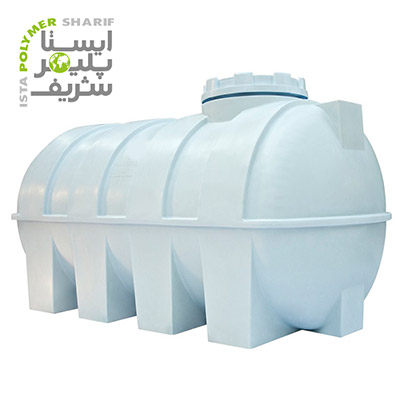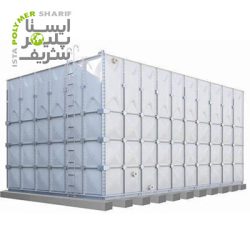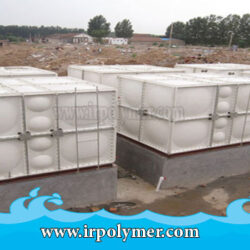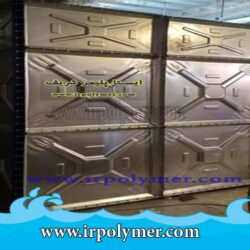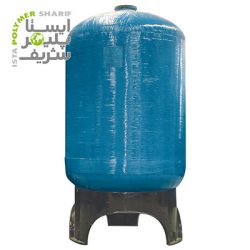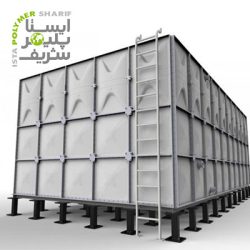Fiberglass tanks have gained significant popularity in the tank market due to their high strength, lightweight, corrosion resistance, and resilience to weather conditions. Their high-quality water, non-porosity, and exceptional environmental resistance are among the advantages of these fiberglass tanks. Additionally, fiberglass sources exhibit very high mechanical resistance and can be produced for burial purposes.
What is a fiberglass tank?
These tanks have a smooth and polished surface, preventing algae growth. Fiberglass tanks are also highly resistant to sunlight and corrosion. They consist of three layers: an inner layer, a strength layer, and an outer surface layer. Fiberglass tanks are made from combinations of resin, polyester, fiberglass, and sometimes gelcoat. These tanks are classified into two categories: Fluid Storage at Ambient Temperature (GRP) and Fluid Storage at Low Temperature (SMC). Fiberglass sources are designed and manufactured in modular or cylindrical forms, available in both seamless (smooth and defect-free) and panel (smooth on one side) configurations for installation inside buildings, on roofs, on the ground, and underground.
Types of fiberglass tanks
GRP Tank
A robust tank designed for storing drinking water and other fluids, produced in insulated (polyurethane insulation) and non-insulated variants. Insulated tanks are suitable for maintaining internal temperatures, especially in high-temperature areas.
SMC Tank
A reinforced composite tank used for drinking water, manufactured using the SMC process. The tank material may include GRE, GRVE, or GRP depending on the type of fluid stored.
Advantages and disadvantages of fiberglass tanks
Fiberglass tanks offer various advantages such as high corrosion resistance, lightweight, and mechanical strength. However, these tanks can have extensive disadvantages, especially during operation. One notable disadvantage is the occurrence of stress cracking. Fiberglass tanks can develop micro-fractures due to continuous cyclic stress, potentially leading to serious tank damage and leaks. This problem is particularly challenging for fiberglass tanks storing corrosive fluids. Repairing leaks in fiberglass tanks, especially those prefabricated by the SMC process, can be very complex.
Therefore, it is recommended to consider multi-layer composite tanks as an alternative. Another drawback of SMC-produced fiberglass tanks is the potential for excessive water penetration under the resin-coated surface of composite panels. Water ingress into the resin-rich sub-layer of composite panel surfaces can lead to bacterial accumulation in those areas.
Pre-fabricated composite tanks face significant challenges in repair if leakage occurs. Research on modular composite tanks indicates a high risk of leakage in earthquake-prone areas following seismic events.
Manufacturing of Fiberglass Tanks

Fiberglass tanks are produced using various methods. They can be manufactured through manual, mechanical, or a combination of both methods. Fiberglass or composite tanks, similar to polyethylene tanks, can easily be produced and installed on-site for specific volume retention. These tanks are designed with high flexibility, providing high environmental resistance and a wide range of shapes. The construction of fiberglass tanks using manual methods is carried out at the project site.
Regardless of size, shape, composition, or final use, all fiberglass tanks are made from thermosetting resin and reinforced with glass fibers. In the construction of fiberglass tanks, colors and pigments can be added to the materials. The overall tank design and the resin mixture and additives determine how effective the fiberglass tank will be under specific conditions.
Continuing, ABtank highlights one of the most popular methods for manufacturing fiberglass tanks, which is centrifugal molding. This process involves heating a thermoplastic resin to a liquid state and spraying catalyzed resins saturated with short glass fibers layer by layer into a rotating mold. Layers are added to achieve the desired thickness. After layering in the mold, the tank remains in an environment where its heat decreases and cools. Once solidified, the newly formed fiberglass tank is removed from the mold.
Types of resins used in fiberglass tank manufacturing
Generally, three resins—Orthophthalic Resin, Isophthalic Resin, and Vinyl Ester Resin—are used for manufacturing fiberglass panels. In this article, ABtank focuses on these three resins.
Orthophthalic Resin
Commonly referred to as a general-purpose resin, it provides initial bonding properties but does not create long-term resistance to corrosion and weathering. Orthophthalic resin, a non-saturated polyester resin, is used by most fiberglass tank manufacturers to produce their standard tank systems.
Isophthalic Resin
This type of resin is used when a higher degree of corrosion resistance is required. Isophthalic resins enhance chemical resistance, tensile strength, durability, and fatigue resistance. With all these enhanced properties, tank and piping systems made from the isophthalic resin system are engineered for long-lasting, maintenance-free operation. In the production of fiberglass parts, Orthophthalic resin requires more time than isophthalic resin and consumes approximately 50% more cost. Isophthalic resin also has much higher durability than orthophthalic resin.
Vinyl Ester Resin
Known for its highest quality chemical and heat resistance, it is typically used in industrial applications. Vinyl ester resins virtually eliminate all moisture vapor transmission, providing an excellent barrier to contain corrosive fluids. Vinyl ester resins also offer excellent heat resistance alongside corrosion resistance. They are hydrolytically stable, enhancing performance in chemical resistance, tensile strength, elongation increase, durability, and adhesive properties. Universal tank and pipe systems have been upgraded using vinyl ester resins for the lamination of all welds, fittings, and flanges.
Buying Fiberglass Tanks
Fiberglass or composite tanks currently dominate a large volume of the storage tank market. Depending on their volume, type of fluid stored, and operating temperature, fiberglass tanks command a wide range of pricing. Fiberglass tanks are most commonly used for storing corrosive fluids and can be utilized in humid environments. Fiberglass tanks can be manufactured using mechanical and manual methods. The price of fiberglass tanks is influenced by the corrosive volume of the fluid and operating temperature. The price of fiberglass sources is determined by the type of fibers and resins used for construction.

